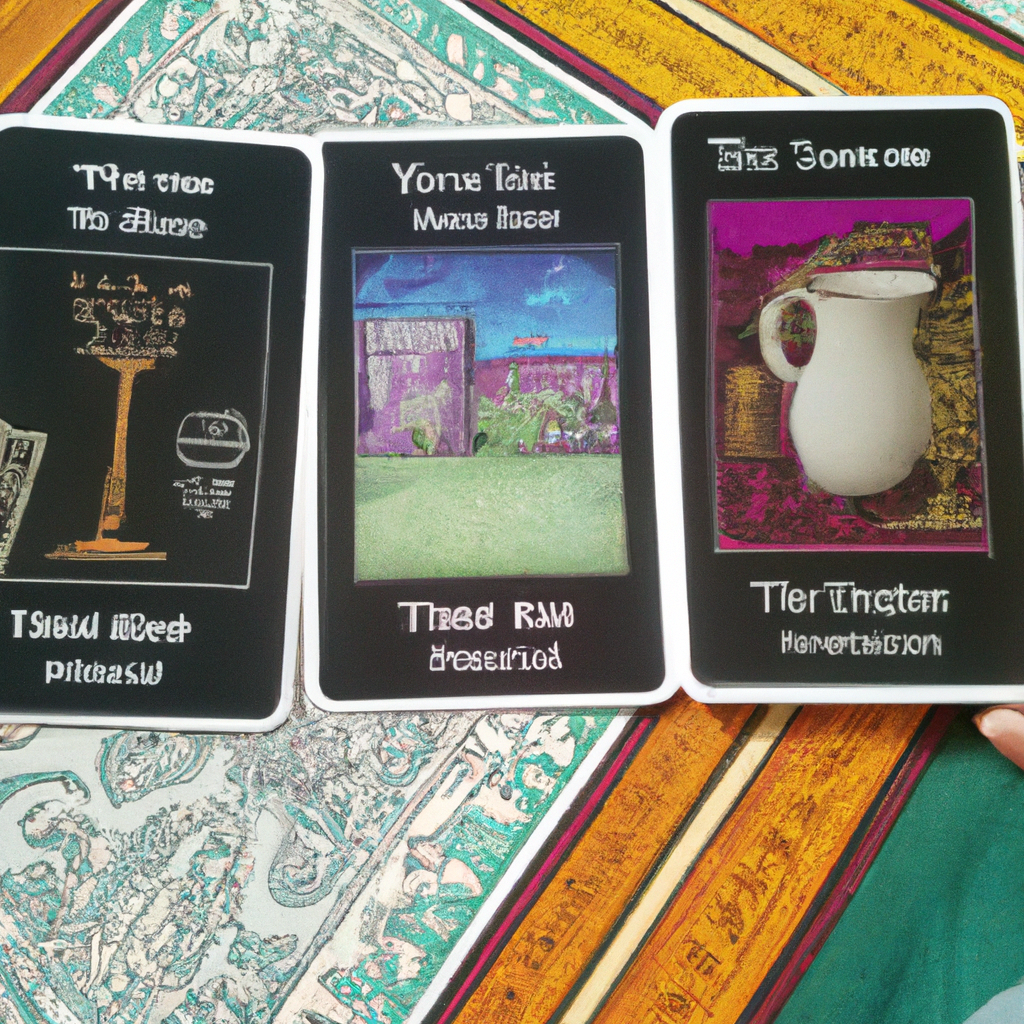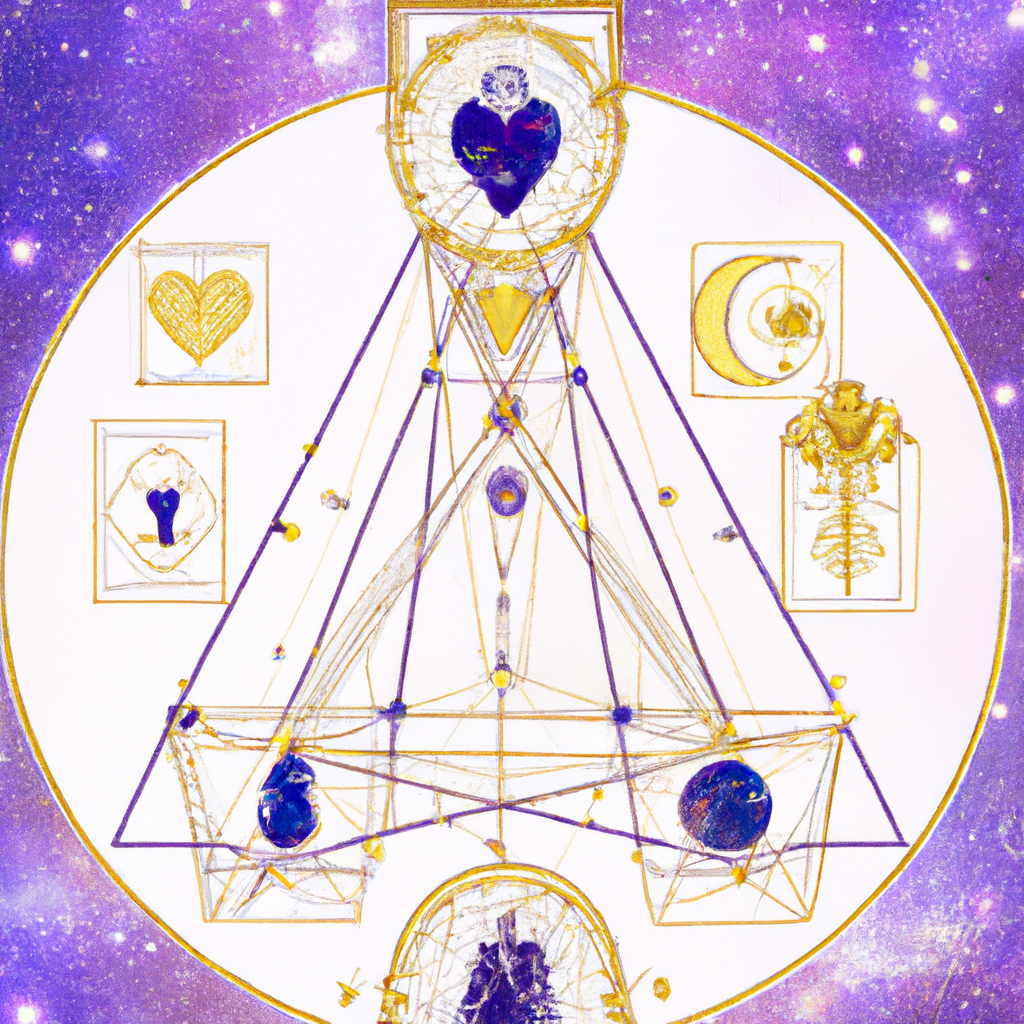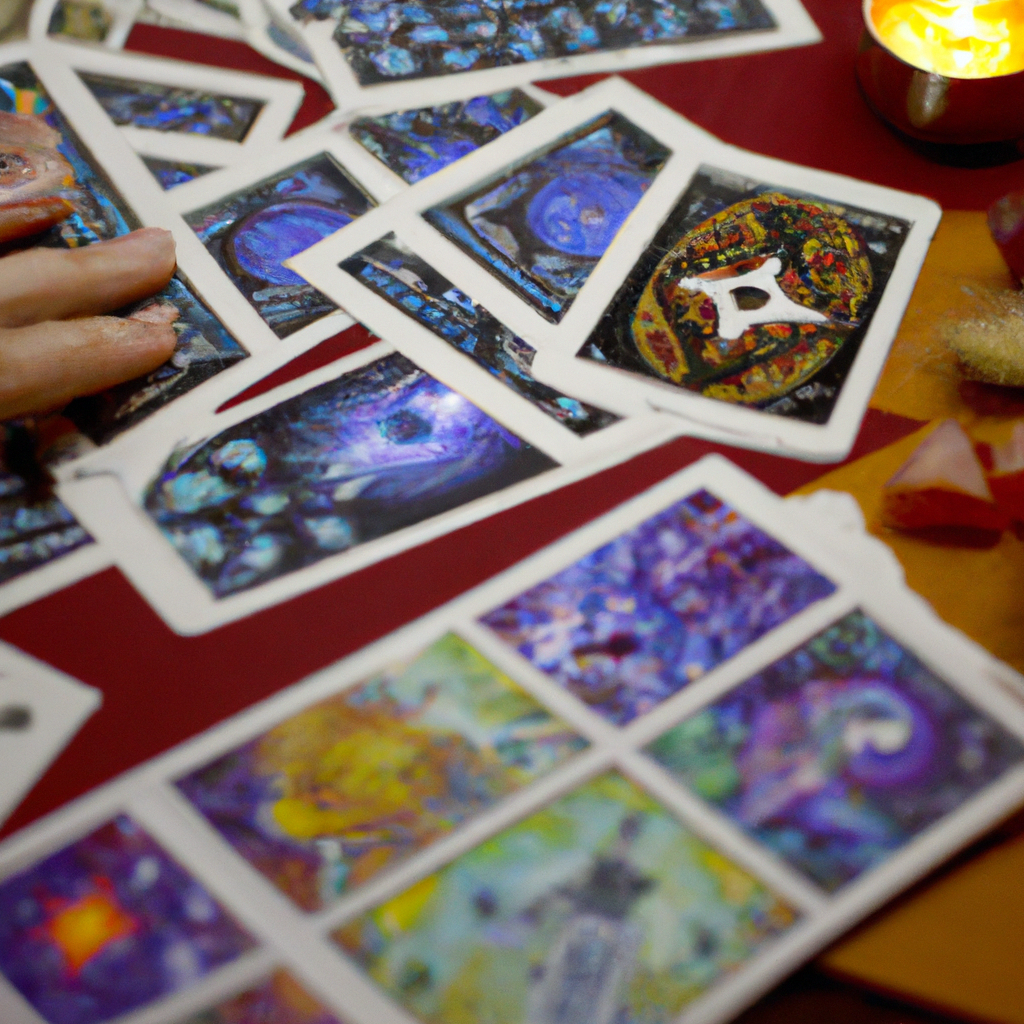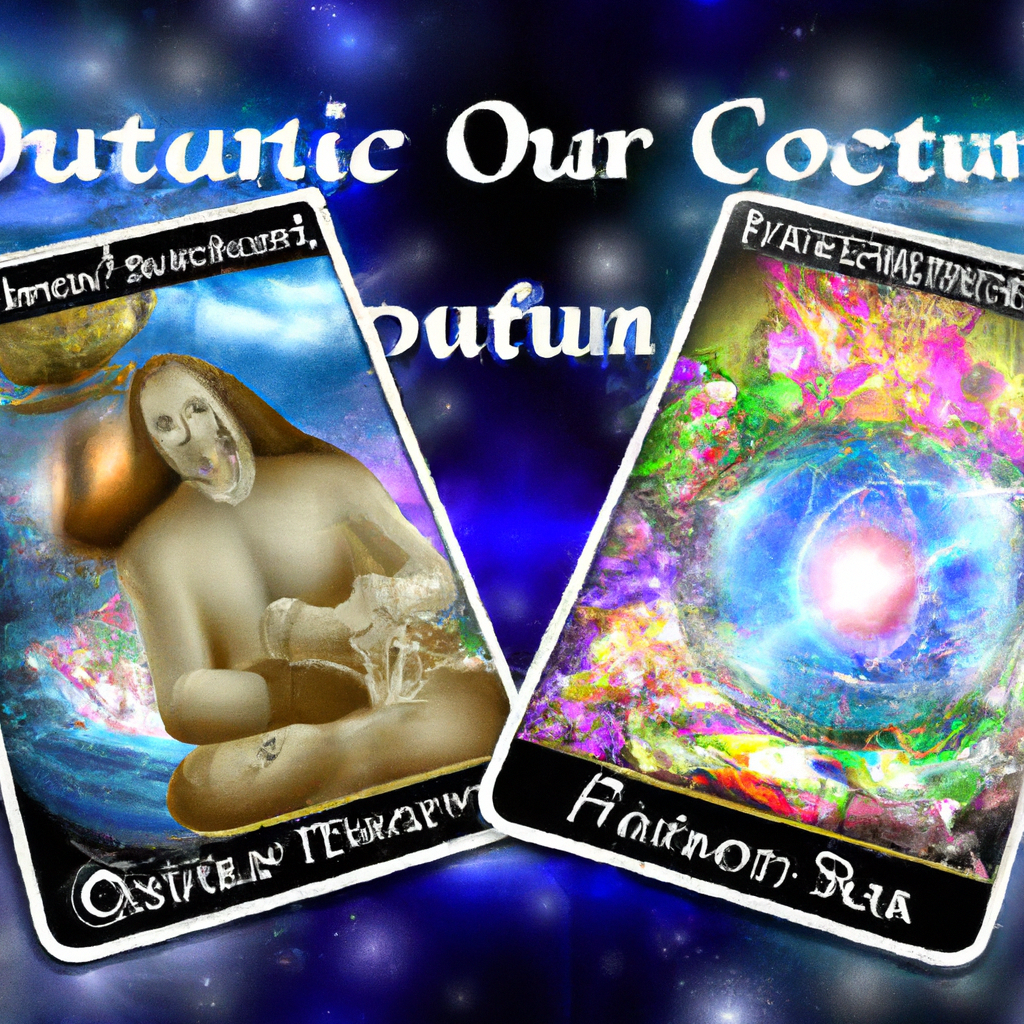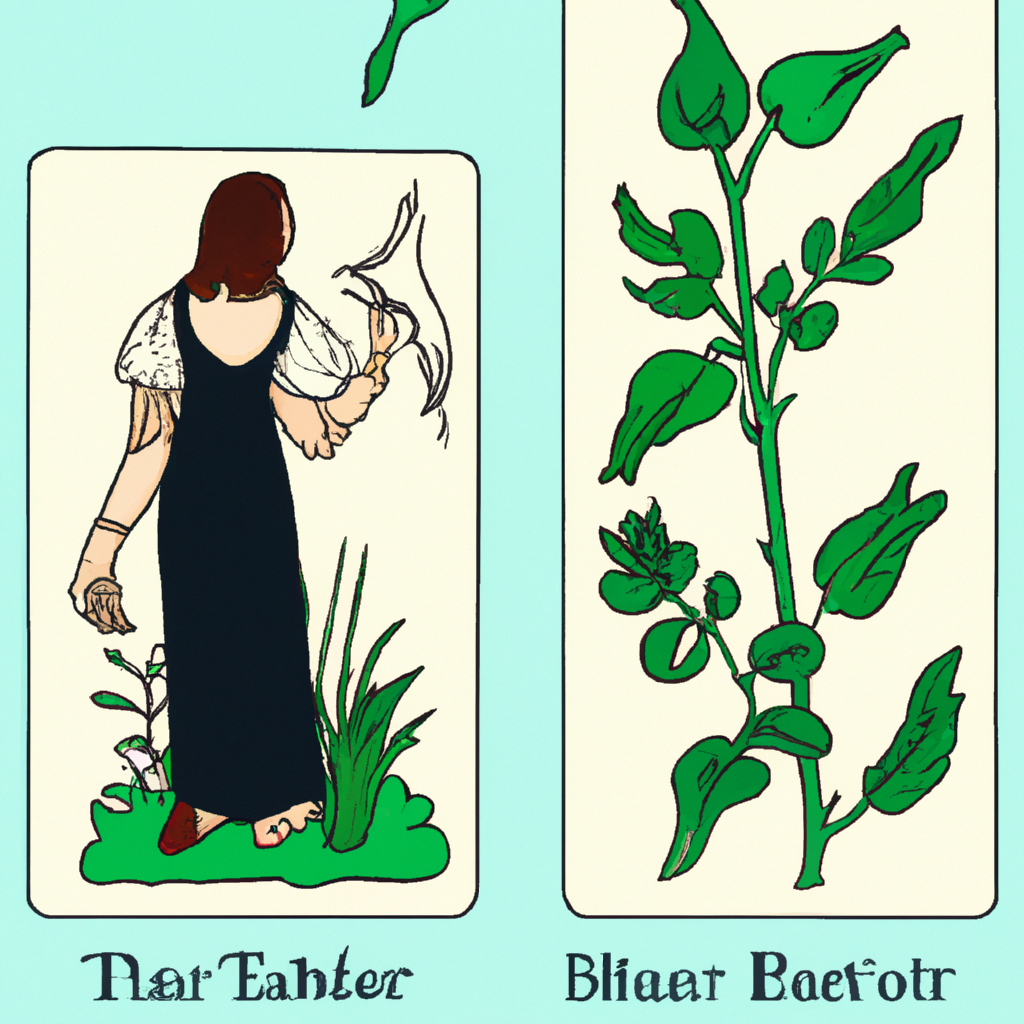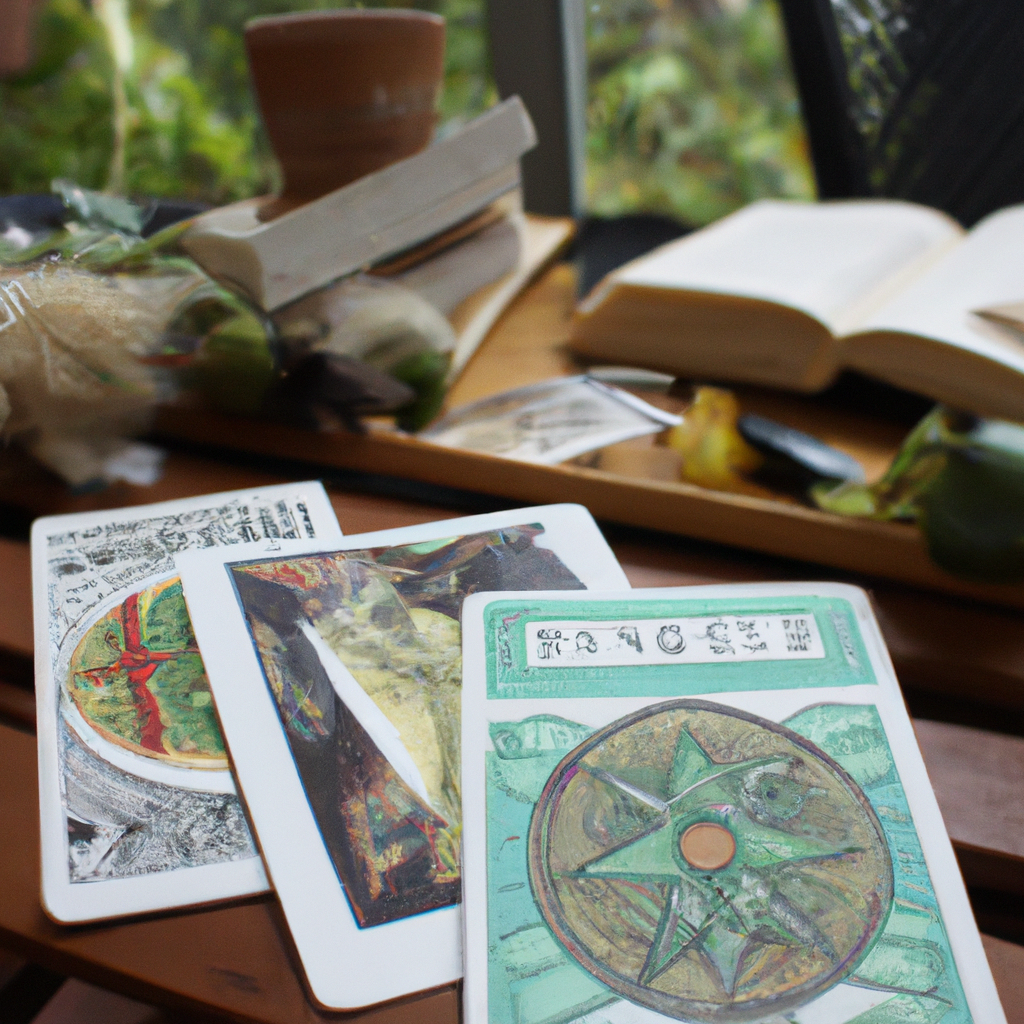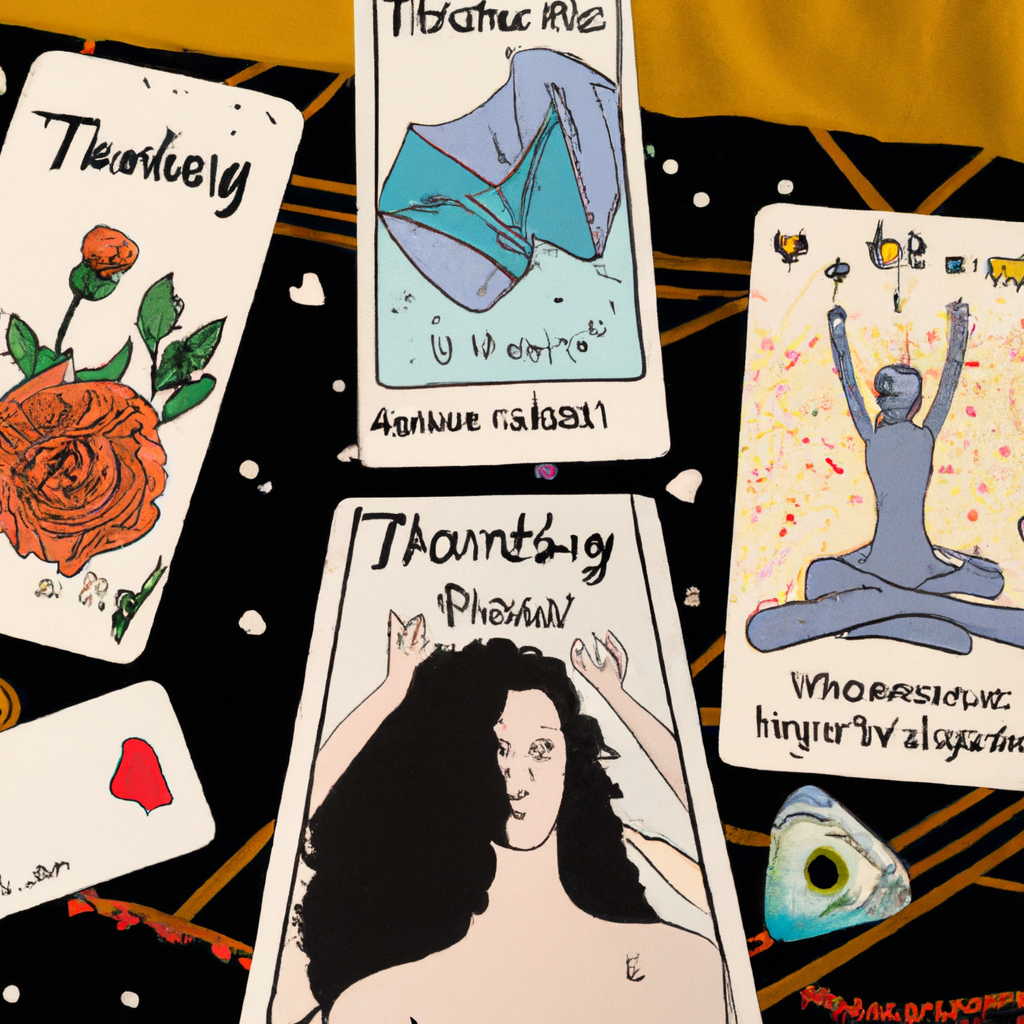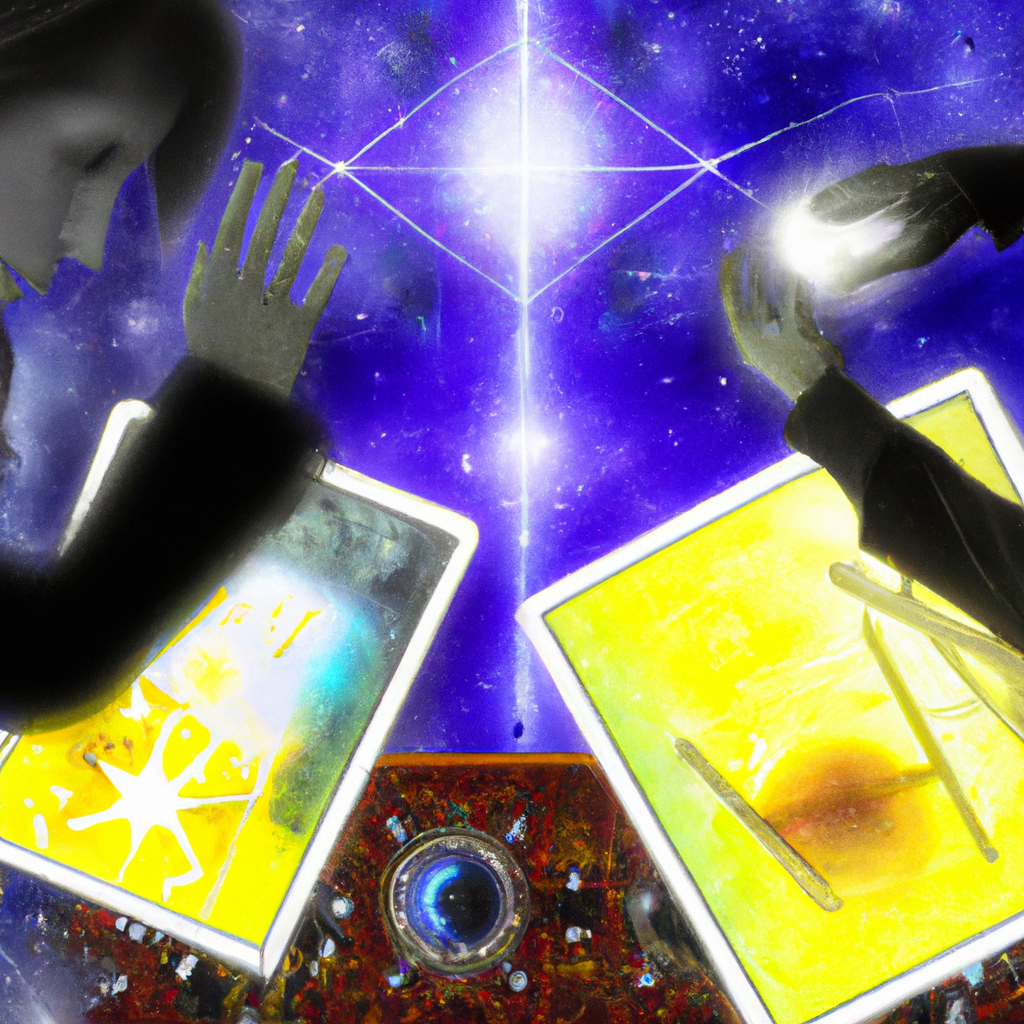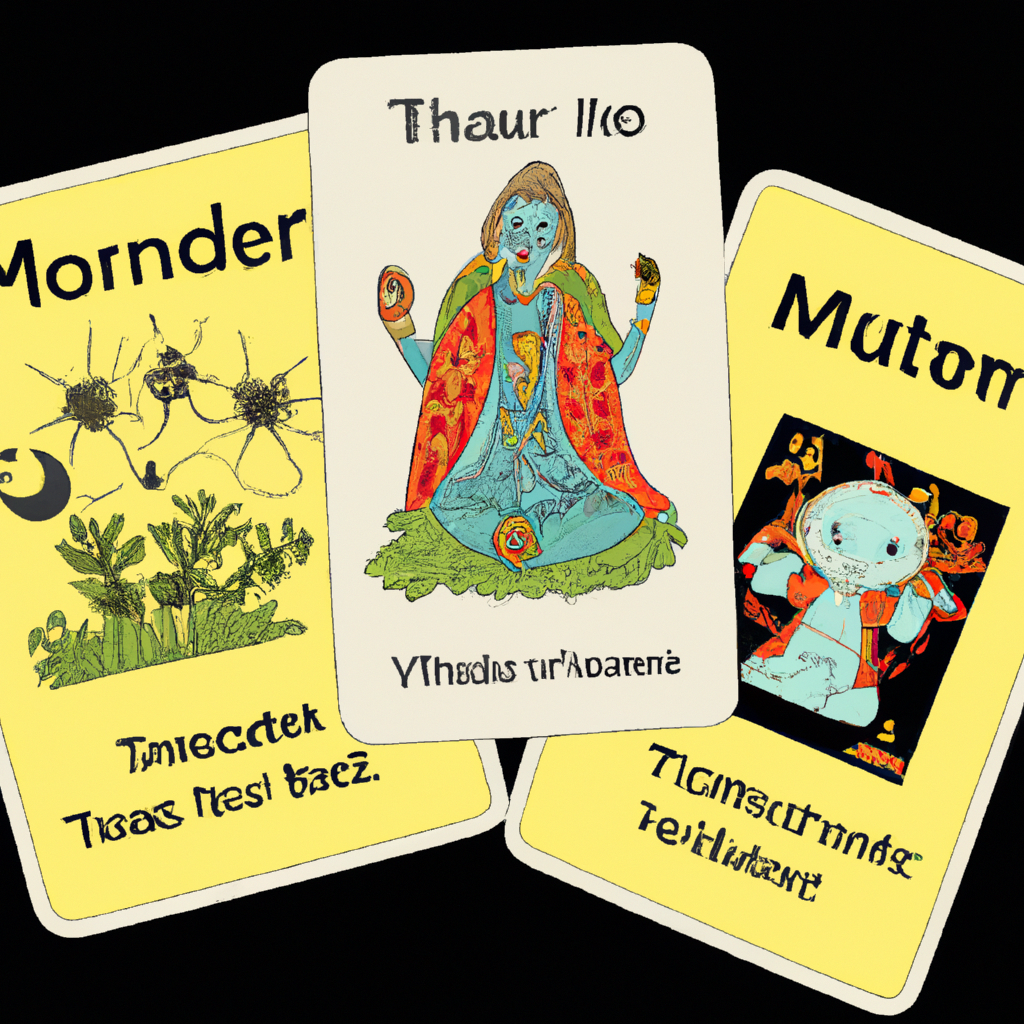Shopping Cart.
No products in the cart.
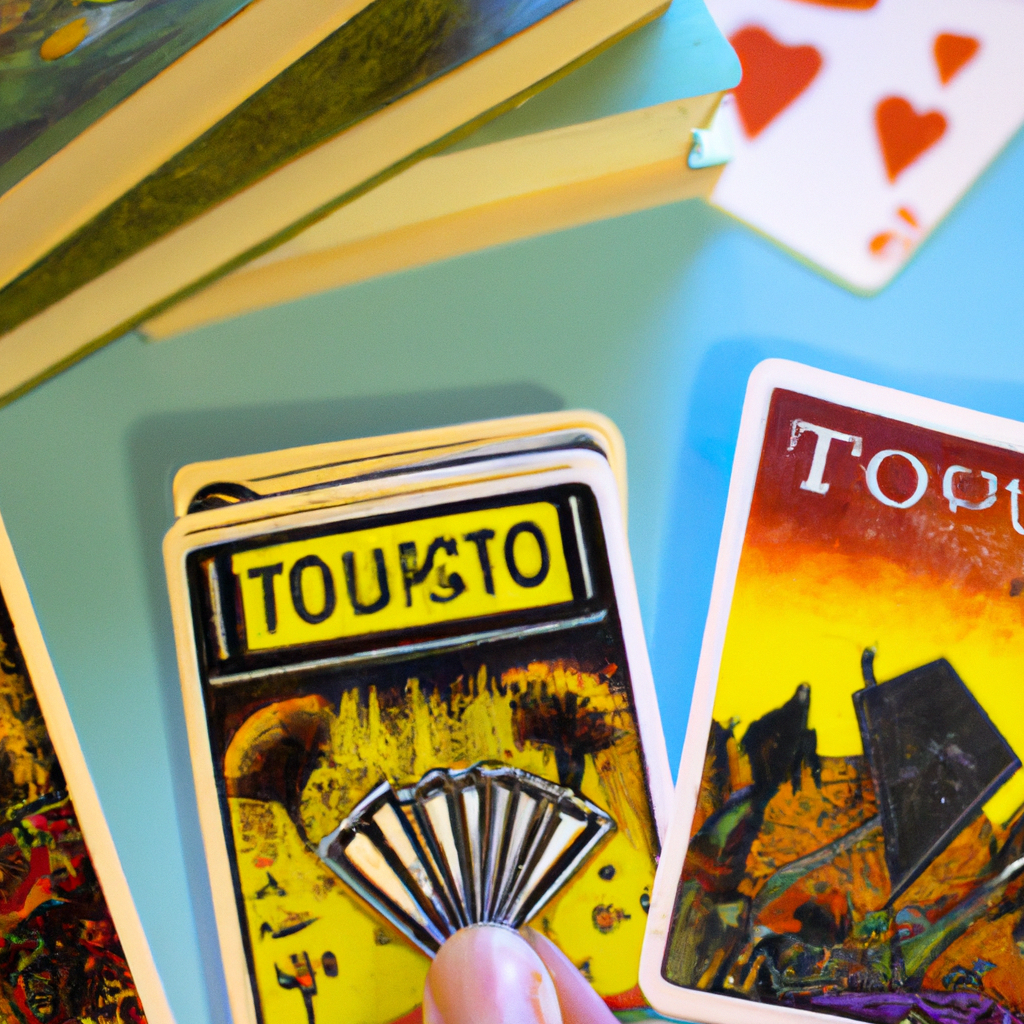
Tarot cards have long been a source of fascination, mystery, and intrigue. They are often seen as a tool for divination, a way to glimpse into the future or gain insight into the present. But what if we were to look at tarot cards through a different lens? What if we were to analyze them in the context of dystopian fiction? This might seem like an unusual pairing at first, but upon closer inspection, the symbolism of tarot cards can provide a unique perspective on the themes and characters in dystopian literature.
Imagine, if you will, a dystopian world. It’s a place where society has crumbled, where the rules and structures we take for granted have been upended. In such a world, the characters are often grappling with uncertainty, fear, and the struggle for survival. Now, consider the tarot card of The Tower. This card typically represents sudden upheaval, chaos, and destruction. It’s not hard to see how this card could symbolize the dystopian world itself, a place where everything has fallen apart.
But let’s delve a bit deeper. The characters in dystopian fiction are often complex, with their own fears, hopes, and motivations. Take, for example, the protagonist who fights against the oppressive regime. This character might be represented by the tarot card of The Chariot, which symbolizes determination, control, and victory. On the other hand, the oppressive regime could be symbolized by The Emperor card, representing authority, structure, and control.
Now, let’s consider the journey that these characters undertake. In many dystopian novels, the protagonist embarks on a quest to overthrow the regime or to find a better life. This journey could be symbolized by The Fool card, which represents new beginnings, spontaneity, and taking a leap of faith. The challenges and obstacles that the protagonist faces along the way could be represented by The Devil card, symbolizing temptation, bondage, and materialism.
But what about the end of the journey? In many dystopian novels, the protagonist achieves some form of victory, whether it’s overthrowing the regime, finding a safe haven, or simply surviving against all odds. This victory could be symbolized by The World card, which represents completion, accomplishment, and integration.
Of course, this is just one way to interpret tarot symbolism in dystopian fiction. The beauty of tarot cards is that their meanings are not set in stone; they are open to interpretation and can be adapted to fit different contexts. So, the next time you pick up a dystopian novel, why not try analyzing it through the lens of tarot cards? You might be surprised at the insights you gain.
In conclusion, the symbolism of tarot cards can provide a unique perspective on the themes and characters in dystopian literature. By analyzing these cards in the context of a dystopian world, we can gain a deeper understanding of the struggles, hopes, and fears of the characters. So, whether you’re a fan of tarot cards, dystopian fiction, or both, this unique pairing offers a fresh and intriguing way to explore these fascinating worlds.

Tarot cards, with their intricate symbolism and rich history, have long been a source of fascination and intrigue. They’ve been used for centuries to predict the future, provide guidance, and even shape narratives in literature. But have you ever considered the role of tarot in dystopian fiction? It’s a fascinating intersection of mysticism and literature that’s worth exploring.
Picture this: you’re engrossed in a dystopian novel, the world is in chaos, and the protagonist is desperately seeking answers. Suddenly, a mysterious character appears, shuffling a deck of tarot cards. The cards are laid out, and the narrative takes a dramatic turn. This isn’t just a plot device; it’s a reflection of how tarot can shape and influence dystopian narratives.
In dystopian fiction, societies are often depicted as oppressive, bleak, and dehumanizing. The characters are usually struggling against a system that’s stacked against them. In such a world, the tarot can serve as a beacon of hope, a tool for resistance, or even a symbol of the oppressive regime itself.
Consider the role of tarot in Margaret Atwood’s “The Handmaid’s Tale.” The protagonist, Offred, uses tarot cards as a form of clandestine communication, a way to maintain a sense of self in a society that seeks to erase individuality. The cards become a symbol of resistance, a quiet rebellion against the totalitarian regime.
In other dystopian narratives, tarot cards can serve as a metaphor for the unpredictability of life. In a world where everything is controlled and regulated, the randomness of a tarot reading can be a powerful symbol of freedom and individuality. It’s a reminder that despite the best efforts of the powers that be, the future is ultimately unknowable and out of their control.
But tarot isn’t always a force for good in dystopian fiction. Sometimes, it’s used to reinforce the power of the oppressive regime. In such narratives, the tarot is often controlled by the ruling class, used to manipulate and control the populace. The cards become a tool of propaganda, a way to maintain the status quo and quash any thoughts of rebellion.
What’s fascinating about the use of tarot in dystopian fiction is how it reflects our own relationship with the cards. Just as in these literary worlds, we turn to tarot for guidance, for answers, and for a sense of control in an unpredictable world. We see in the cards what we want to see, what we need to see. They’re a mirror, reflecting our hopes, fears, and desires.
So next time you pick up a dystopian novel, keep an eye out for the tarot cards. They’re not just a plot device; they’re a window into the heart of the narrative, a reflection of the world the author has created. Whether they’re a symbol of resistance, a metaphor for freedom, or a tool of oppression, they’re a testament to the enduring power and allure of the tarot.
In the end, the role of tarot in shaping dystopian narratives is as varied and complex as the cards themselves. They can be a source of hope, a symbol of resistance, or a tool of oppression. But whatever role they play, they’re a fascinating addition to the rich tapestry of dystopian fiction. So, let’s shuffle the deck and see what the cards have in store for us in our next dystopian adventure.
Tarot cards, with their intricate illustrations and cryptic symbolism, have long been a source of fascination and intrigue. They’ve been used for centuries to predict the future, provide guidance, and explore the human psyche. But did you know that these mystical cards have also found their way into the realm of dystopian literature? Yes, indeed! The intersection of tarot and dystopian fiction is a fascinating one, and it’s worth taking a closer look.
Picture this: you’re engrossed in a dystopian novel, the world is in chaos, and the protagonist is struggling to navigate through the turmoil. Suddenly, a tarot card is drawn, and the narrative takes a dramatic turn. The card’s symbolism and meaning are woven into the story, adding a layer of depth and complexity that leaves you pondering long after you’ve turned the last page. It’s a unique narrative device that adds a touch of the mystical to the bleakness of dystopian worlds.
Take, for instance, the iconic ‘The Tower’ card. In tarot readings, it often signifies sudden upheaval and chaos – a perfect fit for dystopian narratives. When this card appears in a dystopian novel, it can foreshadow a significant disruption in the protagonist’s world, a sudden revelation, or a dramatic shift in the plot. It’s like a literary thunderbolt, adding an element of surprise and suspense to the story.
Then there’s ‘The Fool’ card, which represents new beginnings, spontaneity, and a leap of faith. In a dystopian setting, this card could symbolize the protagonist’s decision to embark on a risky mission, challenge the status quo, or take a path less traveled. It’s a card that embodies the spirit of adventure and rebellion, traits often found in dystopian heroes.
But it’s not just about plot twists and character development. The use of tarot in dystopian literature also serves a deeper purpose. It’s a tool for exploring themes of fate, free will, and the human condition. It raises questions about the nature of reality and the role of individuals in shaping their destiny. It’s a mirror that reflects the hopes, fears, and dilemmas of characters living in dystopian worlds.
Moreover, the use of tarot in dystopian fiction adds a touch of the mystical to the narrative. It creates a contrast between the rational and the irrational, the known and the unknown, the mundane and the magical. It’s a reminder that even in the bleakest of worlds, there’s room for wonder, mystery, and the inexplicable.
So, the next time you pick up a dystopian novel, keep an eye out for the tarot cards. They’re not just random props or plot devices. They’re symbolic keys that unlock deeper layers of the story, adding richness and depth to the narrative. They’re a bridge between the world of the mystical and the world of dystopian fiction, creating a unique blend of the two.
In conclusion, the intersection of tarot and dystopian literature is a fascinating one. It’s a testament to the versatility of tarot cards as a narrative device and their ability to add depth, complexity, and a touch of the mystical to dystopian worlds. It’s a literary trend that’s worth exploring, whether you’re a tarot enthusiast, a dystopian fiction fan, or just a curious reader. So, why not delve into this intriguing literary world and see what insights the tarot cards have to offer?
In conclusion, the analysis of Tarot cards in dystopian fiction reveals a unique intersection of symbolism and narrative. The Tarot, with its rich imagery and archetypal figures, provides a powerful tool for authors to deepen their world-building and character development. It allows for the exploration of themes such as fate, free will, and the human condition, which are often central to dystopian narratives. Therefore, the use of Tarot in these literary worlds not only enhances the reader’s engagement but also contributes to the complexity and depth of the dystopian genre.

